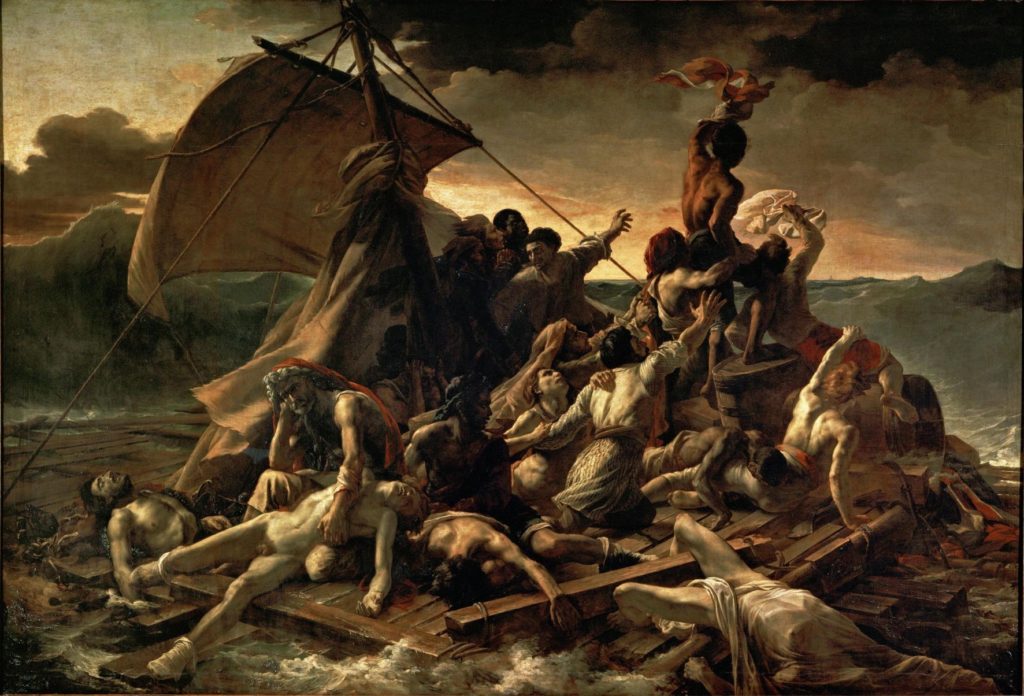Ovid’s Medusa on Le Radeau de la Méduse
Zana Previti
Impossible. How invisible I am,
holding the ocean’s heart in a little
pocket – my hair has never behaved
so perfectly as it does right now,
here in this indifferent hall. Where
can my two sisters be, or a mirror,
so that I can gaze upon their strict
loveliness, watch them gaze
upon mine? Their small survivors’
voices, dull with salt, watching me –
the skins of fish whispering
to me . . . This is not mine, you know,
what wreckage piles up
behind my name. Women
come and go, speaking of some man,
trapped I think, or trapping; this
museum was a fortress. It is still
for some of them. A boy points
to the giant canvas, to the head plunged
underwater and what it sees. What sense
can he find? God’s foot pressing
the treadle of the loom, or the loom, or only
the swimming animal, the drifting
small prey and plant, the cold
unclasping sea water?
I have seen myself where
I see others hammered
into their wooden roles,
places, postures. Impossible
to feel one stitch of pity, love,
that soft lap of empathy.
Not my children. The dead fall,
hang halfway in the water,
like others, like many. My hair
smells of muscle and old paint, ropes
holding me in place while the walls
containing all the world
drop. The boy pointing,
turns to look at me. Yes, I
nod to him. Yes, that wave will
finish us all. Understanding this,
the boy turns to stone.
 Zana Previti was born and raised in New England. She earned her MFA in fiction from the University of California, Irvine, and her MFA in poetry from the University of Idaho. Her work has been published in The New England Review, Hayden’s Ferry Review, RHINO Poetry, Ninth Letter, and elsewhere. She was recently named the recipient of Poetry International’s 2014 C.P. Cavafy Prize for Poetry and the Fall 2016 Emerging Writer-in-Residence at Penn State Altoona. Her first chapbook is forthcoming from Finishing Line Press in 2017, and her first novel will be released by the University of West Alabama’s Livingston Press in 2018.
Zana Previti was born and raised in New England. She earned her MFA in fiction from the University of California, Irvine, and her MFA in poetry from the University of Idaho. Her work has been published in The New England Review, Hayden’s Ferry Review, RHINO Poetry, Ninth Letter, and elsewhere. She was recently named the recipient of Poetry International’s 2014 C.P. Cavafy Prize for Poetry and the Fall 2016 Emerging Writer-in-Residence at Penn State Altoona. Her first chapbook is forthcoming from Finishing Line Press in 2017, and her first novel will be released by the University of West Alabama’s Livingston Press in 2018.

